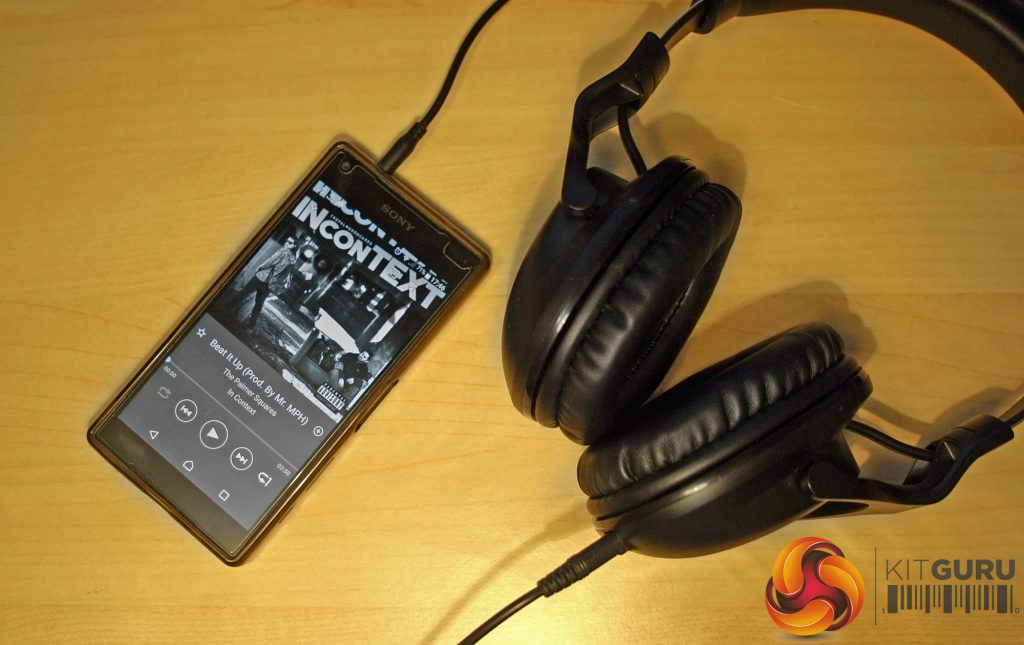To test the Roccat Cross headset, I used it for general office music listening for a week, as well as putting it through its paces in a number of games from different genres. During testing, I used it with the onboard ASUS Z97-K sound chip, as well as the recently reviewed Sennheiser GSX 1000 external sound card.
Since these headphones are also designed to work well as a portable set of cans, I also used them with my Sony Xperia Z5 compact for some music listening.
Throughout testing, I listened out for the quality of the audio, tested how good the microphones sound and used them for several hours in a row to test their comfort over long periods.
Gaming
The Roccat Cross is a decent gaming headset, delivering a solid soundscape in explosive battles and more serene moments. It has strong bass and mids which make for a powerful sound when the bullets start flying and explosions hit, but it is equally capable in more atmospheric titles. In terms of its soundscape strengths, it caters more to the lower-mid range than it does to the higher end, but that does not mean that it cannot handle high notes well.
When a haunting soundtrack was present or I was listening out for the patter of an enemy's feet in quieter moments, I found the Cross very capable indeed and considering its light weight, it almost feels like the sound should be weaker than it is.
Whether you are playing the latest Call of Duty, a creepy, atmospheric title or a calming puzzler, the Roccat Cross will deliver the audio goods.
It is worth noting that the headset sounded noticeably better using the Sennheiser GSX 1000 than the onboard audio solution, which suggests that this headset is capable of much more than stock sound cards are capable of. If you want to get the most out of the Cross, make sure you are running an aftermarket or add-in sound card source too.
Music
Although gaming is a great test for a gaming headset, sometimes you can get a better read on its driver quality when playing music through it, so I also spent a number of hours listening to a wide variety of music through these headphones, using my phone and PC.
It is still clear that this is a headset which caters more to the lower end of the frequency spectrum than it does the highs, but it is not particularly pronounced and does not leave you wishing for a little more oompf at the top end.
Volume wise this headset can get plenty loud, which is nice to see considering it does not come with its own USB powered amplification. There is some loss of clarity at the very top end of the scale, with the bass starting to take over – you can actually feel the drivers vibrating away inside the ear cups – but even at 100 per cent it never feels too dominant.
It is certainly loud enough to damage your hearing over long periods though, so do be careful.
Once again I found the listening experience improved by using the add-in soundcard, though I also found the Xperia Z5 delivered a slightly improved sound over the ASUS onboard solution. It is good to see that a media-orientated smartphone can pull out a little more clarity from a set of headphones, but as before, consider a nice add-in soundcard along with these headphones, as it does make a difference.
Comfort
The Roccat Cross is a very comfortable headset to wear for extended stretches. I feel like a big part of that success is that it is so lightweight. At just 185g this is one of the lightest headsets I have ever tested and not having a hefty headband weighing down on your head is a real treat.
The ear cups do encompass your ears, so if you are prone to getting a little warm-in-the-lobes, then expect something similar to happen with the Cross, but it is not oppressive in the way it encompasses your ears.
That said, the ear cups are a little narrow. My not-inconsiderable ears fitted within them easily enough, but I could see how someone with larger then average ears might struggle to fold them inside. That is why if possible, we would always urge you to try out a headset before buying. The fit can be very personal.
Other Features
The quick-swap cable system that the Cross uses is a neat feature. There is a very specific orientation you need to put the cable in at, which seems a little counter-intuitive and makes the process not quite as smooth as it could be, but it is handy to be able to switch from one to the other with just a cable swap. The fact that it removes at the base too means when travelling with these cans it's impossible for them to become tangled.
Noise cancelling of the cans is pretty good when nothing is playing, but with the volume up it is hard to hear much unless someone is shouting right next to you.
Microphone quality was good with both the boom and in-line mic, though was, of course, better with the former and more directional. The headset does lack a mute function when using the boom however, which is something worth considering.
 KitGuru KitGuru.net – Tech News | Hardware News | Hardware Reviews | IOS | Mobile | Gaming | Graphics Cards
KitGuru KitGuru.net – Tech News | Hardware News | Hardware Reviews | IOS | Mobile | Gaming | Graphics Cards



